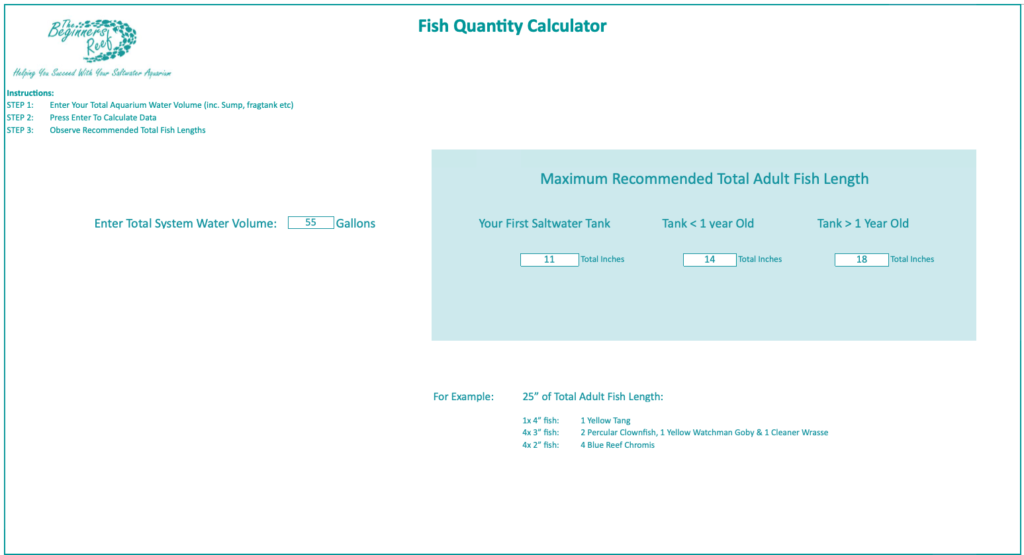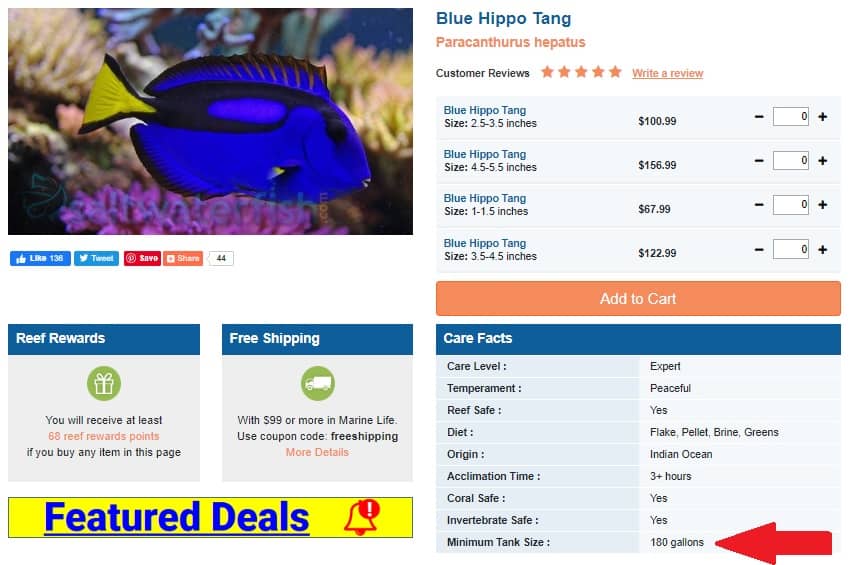This is one of the most popular questions for a beginner in this hobby. We all want as many fish as we can put in our aquariums, but we know that if we have too many they will begin to die – So what’s the formula?
For a new saltwater aquarium, the general rule of thumb is 1″ of fully matured fish for every 3-5 gallons of tank volume. The bigger the aquarium, the more fish you can have due to the higher quantities of nitrifying bacteria processing the bio-load. A 50G tank can house 10-16″ of fully-grown fish.
A good Rule-of-Thumb for a new, unmatured reef tank is:
| Aquarium Size | Max Number of Fish | Typical Number of Fish |
|---|---|---|
| 10 Gallons | 3″ | 3x 1″ fish |
| 15 Gallons | 5″ | 4x 1″ fish |
| 20 Gallons | 7″ | 2x 2″ fish |
| 30 Gallons | 10″ | 4x 2″ fish |
| 55 Gallons | 18″ | 1x 4″ fish 4x 2″ fish |
| 75 Gallons | 25″ | 1x 6″ fish 8x 2″ fish |
| 120 Gallons | 40″ | 2x 6″ fish 2x 4″ fish 6x 2″ fish |
| 150 Gallons | 50″ | 3x 6″ fish 3x 4″ fish 7x 2″ fish |
- If this is your first saltwater aquarium:
I would use 1″ of fully-grown fish per 5 gallons - If your aquarium is mature and you have some experience:
I would use up to 1″ of fully-grown fish per 3 gallons
This ‘Total Inches’ rule of thumb can be split across many fish or you could have just one fish, but you have to consider the environment the fish will live in rather than how many you can put in there.
There are many factors that influence an aquarium’s stocking level and just because your friends seem to have a stocked aquarium does not mean you can – Yet!
For Example:
Would you be more comfortable being on a train when every person has a seat, the air conditioning is nice and it’s a pleasant ride home.
Or
Would you be more comfortable on the same train when it’s standing room only, the air conditioning has broken, it’s the end of the workday and its 100°F?
Let’s take a look at the many factors you have to consider when stocking your aquarium:
Reef Tank Fish Stocking Calculator
If you would like to use a super simple calculator to determine your exact fish stocking needs download your free copy here:
What Influences Fish Stocking Level in a Reef Tank?
The number of fish that can be placed into an aquarium and thrive is based on aquarium maturity, bio-load, water temperature, water flow, filtration, swimming space, hiding space, the types of fish you wish to keep, and the compatibility of the fish you wish to keep.
1. Aquarium Age
The maturity of your aquarium is going to play a huge factor in how many fish it can support. When your aquarium is new there are a few things to be aware of:
- It has not grown the Nitrifying Bacteria to enough numbers to process the waste
- It will go through algae blooms that will increase the waste load and consume oxygen
- You as a new owner may not have the experience to keep your water parameters stable
- You may not have had enough time to learn how your tank naturally operates and where its parameters settle
- Your maintenance routine may not be regular enough yet

Just like any job or situation in our lives, we get better the more we do it and the longer we do it. This is called experience. Your aquarium is no different and as your experience grows, your aquarium matures, and as you understand it better you will be able to keep more livestock in it.
By understanding it better you will be able to tell when the maintenance needs to be improved or when something is not quite right and needs attention.
2. Bio-Load
Bio-Load or Biological Load is the amount of waste created by every living organism in your aquarium. This waste has to be removed, treated, or converted by your 3 filtration types in your aquarium.
- Mechanical Filtration – This physically removes large particulate waste from the water – Protein Skimmers, filter socks, floss, and sponges do this.
- Chemical Filtration – This chemically absorbs or converts pollutants, elements or odors within the water – Activated carbon, GFO, Bio-Pellets do this.
- Biological Filtration – This is bacteria that consume and convert the toxic elements in the water into safer elements – This is the nitrifying bacteria that cover every surface in the aquarium (with time).
The more waste put into the water, the more the filtration has to process. Most of the waste is a culmination of uneaten food, dead and decaying matter, and animal excrement.
When your biological filtration is new it has not had time to grow enough bacteria to process the waste. It needs time to grow every time you add a new fish to your aquarium – Hence why you never add lots of fish in one go.
Your aquarium needs to reach a balance of bio-load and bacteria to process it. When your bio-load overwhelms your bacteria this is when you get high Ammonia, Nitrite & Nitrates usually leading to fish and or coral death.
3. Water Temperature
Although you may not realize this but water temperature plays a huge role in how much oxygen it can store. The warmer the temperature, the less oxygen it can hold.
Oxygen can be depleted rapidly if you have a high bio-load and then your water temperature is allowed to rise, especially in summer.
The dissolved oxygen capability of water at 78°F is 8.4mg/L
The dissolved oxygen capability of water at 82°F is 8.0mg/L
This may not seem very much but if your bio-load is already high and your Dissolved Oxygen is just enough to support your current inhabitants, any rise in temperature could begin to affect your fish and create a rapidly declining chain of events.
4. Water Flow
High, random, and chaotic water flow is paramount in a saltwater aquarium, even more so when you begin to add corals. Water flow is what keeps the detritus and waste suspended in the water and prevents it from settling on corals, in holes in the rock, on your sandbed etc.
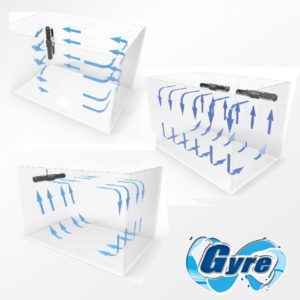
When the waste is suspended in the water column it is able to pass through to the filtration to be processed. If it is left to settle in the aquarium it can do several things:
- Detritus settling on coral can burn the corals’ tissue
- Detritus left in holes or on the sandbed will begin to decay and break down. This will raise your Ammonia, Nitrate & Phosphate
Water flow in a reef tank needs to be at least 20x the total water volume.
What this means is the water moving around INSIDE your aquarium needs to be:
___Total Flow Rate of ALL Wavemakers & Powerheads___
Total Volume of Aquarium (& Sump, Refugium if fitted)
eg:
Total Water Volume = 60 Gallons
2 Wave Makers = 750 Gallons Per Hour each = 1500gph
1500 / 60 = 25x Water Flow Turnover – This is an adequate starting point for flow.
You may have noticed I have not included the return pump in this equation. That is because the flow through your filtration and/or sump needs to be alot slower. The flowrate through your sump needs to match the flowrate of your Protein Skimmer to allow it to work most efficiently.
To increase flow rate turnover in your aquarium you add powerheads and wavemakers, not increase the size of the return pump!
A high water flow inside the aquarium gets the waste TO the filtration.
A slow flow rate THROUGH the filtration allows the waste to be processed.
For Example:
You want the ‘Check-In’ line at the airport to move as fast as possible, but you want the check-in agent to be methodical and accurate in checking you in so you don’t get your luggage lost or you get given the wrong boarding passes 😉
If you would like more information on the various types of pumps for aquariums please read this article:
Aquarium Pumps – What To Use & Where
5. Adequate Filtration
Adequate of anything is important in life and your filtration is no different. Having enough Nitrifying Bacteria to constantly process waste is the point every aquarium needs to at to maintain equilibrium.
However, you can only fit so much bacteria in a given space. Bacteria live on surfaces in your aquarium, once all those surfaces are covered you can no longer grow any more bacteria. If you now add more fish, you need more bacteria, but there is nowhere for it to grow.
There are ways in which you can provide more space and they will be covered later in this article.
The main focus of this section is you need to be aware that there is a point where you cannot physically get any more cleaning power out of your aquarium.
You will notice when you have reached this point if, with regular maintenance, water changes and testing your Ammonia, Nitrate, and Phosphate continue to rise. At this point, you are overstocked with fish or you need to increase your filtration media.
6. Swimming Space
Researching your intended fish purchases is something that I cannot stress enough! Spending 10 minutes looking into the requirements, and compatibility of your new fish is paramount to its health.
Swimming space can be an important factor in the fish you have or want. Many fish are natural long-distance swimmers in the wild and require open water to be able to flex their muscles.
This is one of the reasons why Tangs, especially Hippo Tangs become stressed in small aquariums. Tangs, Butterflies, Angels, Triggers, and Anthias all require open space to inhabit the water column where they would naturally. Remember you are trying to create a natural part of the world’s coral reefs in your home.
Designing an open aquascape can be done, but you need to have a plan of the type of fish you want to keep before you even set your tank up. I knew I wanted a Yellow Tang in my 75 gallon reef so I created an aquascape to allow him to swim in the strong current.
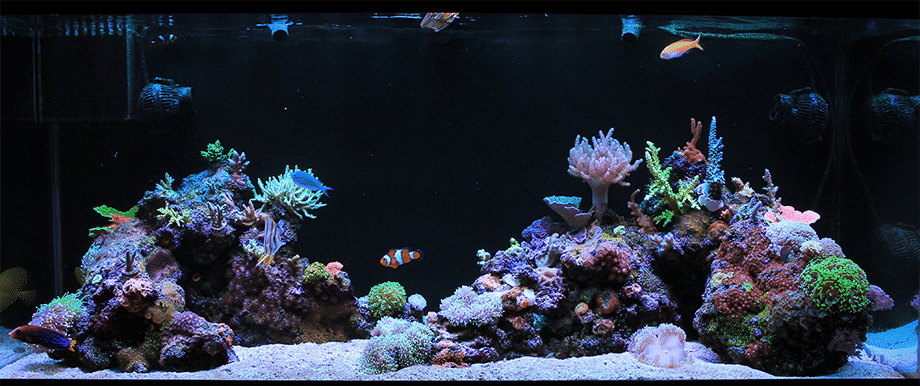
Allowing a fish to become stressed is a surefire way to get an illness like Ich to show its head and spread to every fish in your tank! If you have a small tank, you need small fish that sit more than swim!
7. Hiding Space
Every fish you add to your tank needs a home. When a fish is startled or threatened you can see it will bolt to a secure spot. Every fish needs to have a safe spot.
The way you craft your Live Rock aquascape needs to provide hidey holes for every sized fish. Small tanks with small fish are easy, but as your aquarium gets bigger, so do your fish. Again, a plan of what fish you want to add will help create the perfect environment for them.
8. Types of Fish
As a beginner, there are many fish that you cannot have, especially if you have a small aquarium. Many fish require very specific feeding or habitat needs, and many will just grow too large for your aquarium.
The best way to find great fish for a beginner is to have a look at the two articles listed in the ‘Further Reading’ section at the end of this article.
The second way to check if a fish is right for you is to look at an online fish supplier like Saltwaterfish.com. Each fish listing shows the requirements you need to meet as well as the minimum tank size to hold each fish.
9. Fish Compatibility
When enclosed in a small environment it is important to ensure all your inhabitants will peacefully co-exist. Many fish species can be very territorial and if allowed will make the entire aquarium their territory. Any fish added after will be chased and possibly killed.
To ensure harmony I highly advise you to check your intended fish purchases with the fish you already own to ensure no compatibility problems.
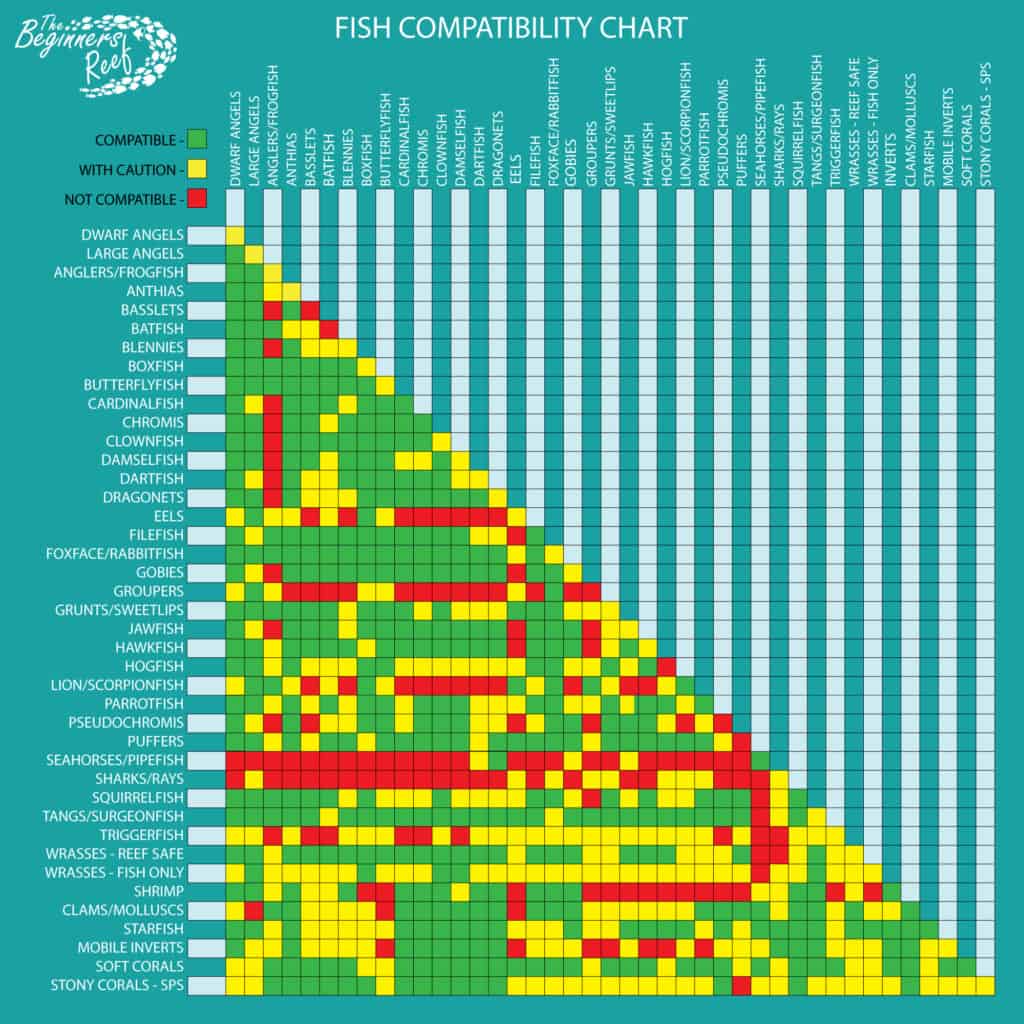
How to Keep More Fish in an Aquarium?
More fish can be kept in an aquairum that is cleaned regulary and has regular water changes. Aquariums with sumps that add more water volume, have additional filter media to colonize nitrifying bacteria, fed sparingly and have a good diversity of janitorial inhabitants will all help increase stock.
Remember these are all guidelines and testing your water parameters will be the only definitive way to see how your tank is doing with the bio-load.
Time
Patience is the true foundation in this hobby and the longer you hold off adding fish, the better your aquarium’s overall health will be. By learning to walk before you can run you will find that in time you will be able to add another fish, or pair or shoal (Depending on the size of tank).
Let your biological filter grow, your routine refine and your parameters stabilize then you will have a far better success rate than trying to get all your aquarium up and running and stocked to the brim in the first 3 months.
Sump
Adding a sump is a great way to increase water volume and provide space for adding more live rock to increase the surface area on which Nitrifying Bacteria can colonize.
Increasing water volume will also help to smooth out any fluctuations in water parameters as there is more water volume for that influence to work on.
If you want to find out more about how beneficial a sump is to an aquarium system please check out this article:
Aquarium Sumps: This Is Everything You Need To Know!
MarinePure Blocks
If you have room in your aquarium filter compartment or in your sump I highly recommend adding some MarinePure. These come in a range of plates, blocks, spheres and small gems and they are products to provide immense surface area for your Nitrifying Bacteria to colonize.
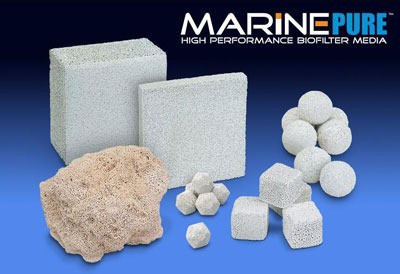
Here at Amazon.com
They are a super porous material that have an insane square footage of surface area due to the pores, holes, tunnels, and tubes throughout each piece.
More Nitrifying Bacteria = Higher Bio-Load
Maintenance
Regular maintenance is one of the best ways to ensure the maximum bio-load for your aquarium can be reached.
Weekly vacuuming of the sand bed, blasting settled detritus from your rocks with a turkey baster, regular changing of the filter socks/floss and timely changing of chemical filter media will ensure your aquarium remains clean and healthy.
If your aquarium is healthy, your livestock will remain healthy.
Water Changes
The quickest and fastest way to keep Ammonia and Nitrate low is weekly water changes with high-quality RO/DI water and a good salt mix from a reputable brand.
If your water changes are only once a month then that allows time for these toxins to build and stress your fish. With a regular supply of new saltwater, your parameters will remain stable and your water quality will be higher.
Higher Water Quality = Higher Bio-load
If you wish to find out more about how important a good RO/DI water filter is then please check out this article:
RO/DI Water Filters For Saltwater Aquariums
Smaller Feeding
Many aquarists think they need to feed more than they should, your fish are pigs and they will eat all the time if they could, but large or lots of feedings can really overload your biological filter.
Not all food gets eaten and if it is allowed to settle it will break down and raise your water parameters. To also add to the problem is the more you feed your fish, the more they go to the bathroom.
Fish waste allowed to settle will also break down and raise your water parameters.
This where I find blasting your rocks with a turkey baster can really help get this junk into the water column to be removed by your filtration and water changes.
Feeding small amounts twice a day and watching to ensure it ALL gets eaten is better than dumping in a load ful once a day.
Clean-Up-Crew (CUC)
The final part of a healthy aquarium – The janitors. Shrimp, crabs, snails, and worms are all scavengers and they really do a great job of helping to keep detritus and fish waste to a minimum.
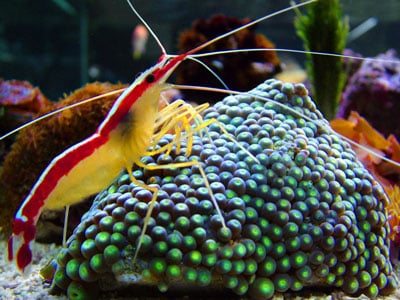
By constantly scouring the aquarium for food they keep your tank clean and help to offload some of the work of your biological filtration.
To Finish
The maximum amount of fish you can have in your aquarium will all depend on many of the factors listed above. Waste management, ecological balance, fish habitat, stress, health, compatibility & maintenance all play their part in maximizing the amount of fish you can stock.
With patience and some careful fish selection, you will have a beautiful reef tank with enough fish to create a wonderful addition to your home or office.
By starting out with 1″ of fish for every 5 gallons you will be on track for success.

